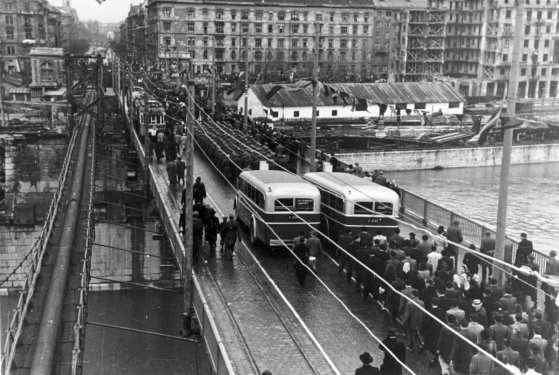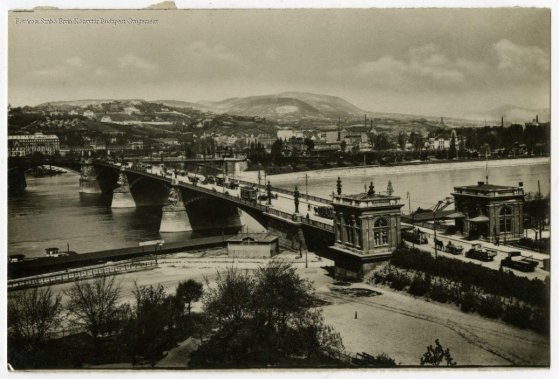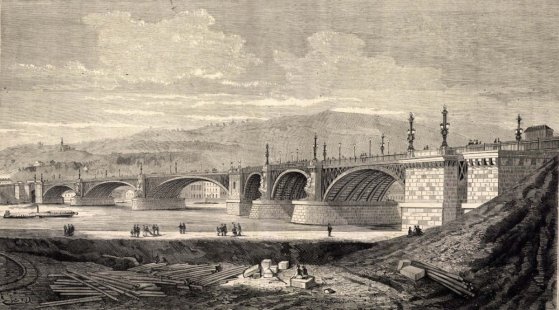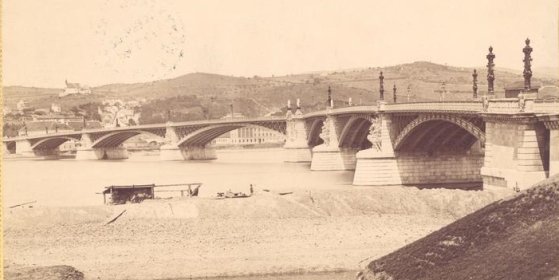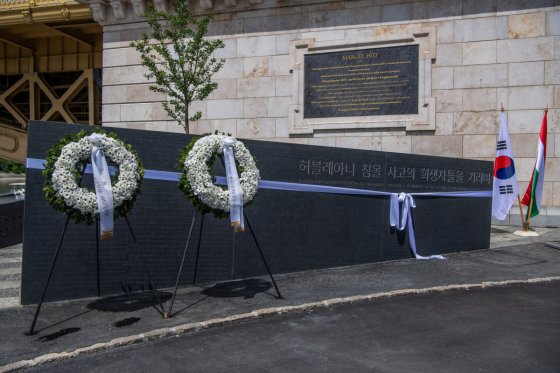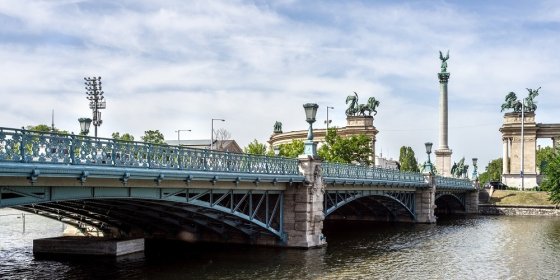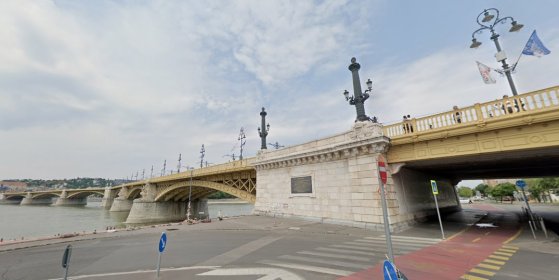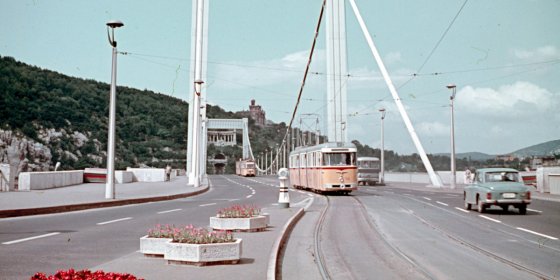 The „intertwined history” of the bridges and the city of Budapest
Which ideas and events have shaped the fate of bridges of Budapest and the cityscape? Alongside many other interesting facts, this question is also answered this newly published book by the Budapest City Archives, which introduces the history of bridges in Budapest.
The „intertwined history” of the bridges and the city of Budapest
Which ideas and events have shaped the fate of bridges of Budapest and the cityscape? Alongside many other interesting facts, this question is also answered this newly published book by the Budapest City Archives, which introduces the history of bridges in Budapest.
Margit Bridge
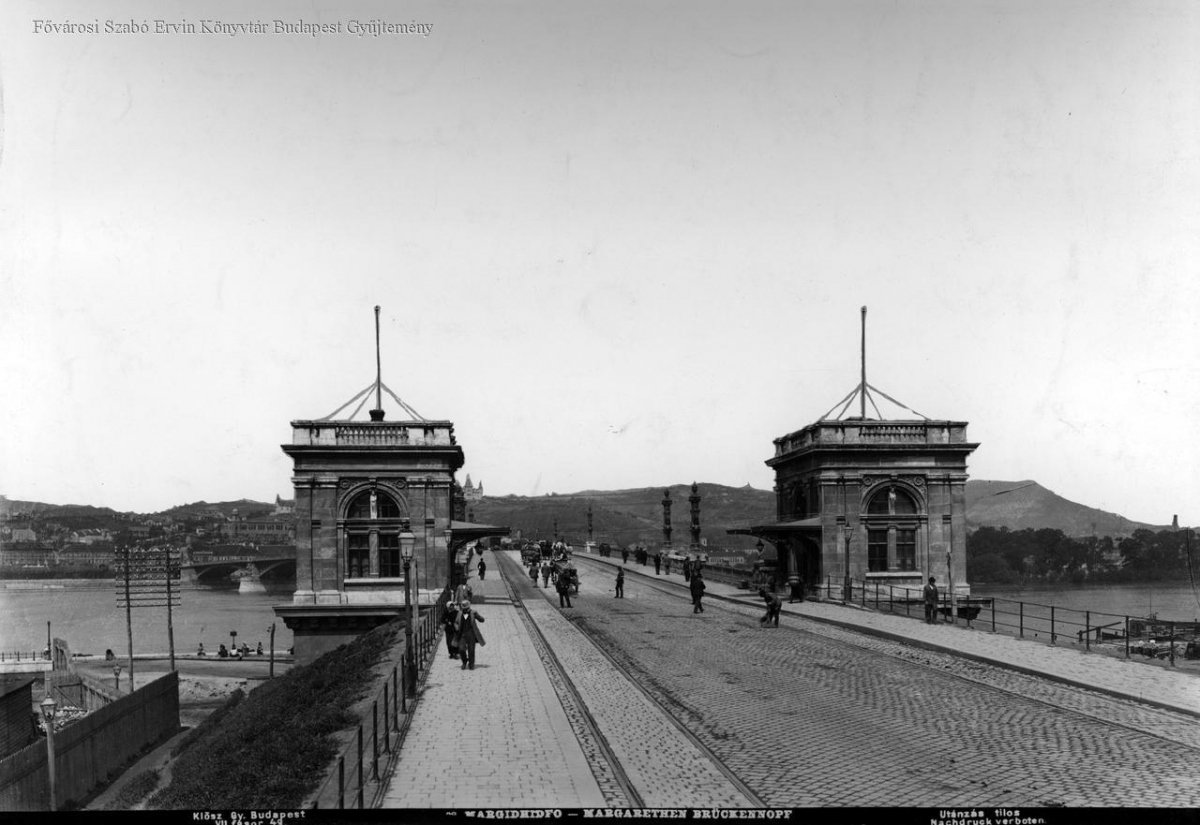 Who should pay for the bridge? - The Pest and Buda horse-drawn railway companies merged 145 years ago
Who should pay for the bridge? - The Pest and Buda horse-drawn railway companies merged 145 years ago
February 4, 2023 at 2:00 PM
The desire to save money forced the merger of the Pest and Buda horse-drawn railway companies because horse-drawn railway traffic was only allowed on Margit Bridge if the companies paid the additional cost of the wider bridge. Since the two companies could not agree on the use of the bridge, 145 years ago the larger, richer company bought the smaller one instead. This made it possible for horse-drawn railway transport to start between Pest and Buda a year later, in 1879.
The exploded Margit Bridge: the half-reconstructed crossing was handed over 75 years ago
November 19, 2022 at 11:00 AM
The elegant arches of Margit Bridge are one of Budapest's jewels. This graceful and beautiful structure was also destroyed by the Germans in World War II. The bridge was rebuilt in two parts, the southern side was handed over 75 years ago: it was open to the public from 16 November 1947.
It was handed over 85 years ago, but the widened Margit Bridge exploded 7 years later
October 1, 2022 at 11:30 AM
Margit Bridge was completed as a real luxury investment in the 1870s, under the direction of a French engineer. But traffic at Budapest's second Danube crossing remained very low until the end of the century. However, at the beginning of the 1930s, it already proved to be narrow, so it was decided to rebuild and widen it. The inauguration was held 85 years ago, on 1 October 1937.
The first Danube bridges in Budapest were designed by foreigners - English and French engineers were commissioned
March 25, 2022 at 9:00 AM
Although the construction of bridges has a long tradition in Budapest, in the XIX. century there was not enough expertise and technology at home for this job for a long time. Foreign engineers also originally built the Chain Bridge, the Margit Bridge and the Railway Bridge. The first completely Hungarian Danube crossing was the Ferenc József Bridge, which was built in 1896 for the celebration of the millennium of Hungary.
The look of the second bridge of Budapest was decided 150 years ago
March 8, 2022 at 11:00 AM
The result of the design competition for the Margit Bridge was decided on 9 March 1872, 150 years ago. The winner became Ernest Gouin’s elegant arch bridge idea. The bridge south of Margit Island was to be built with a representative purpose, hoping to raise the light of the about-to-be united Budapest, and help make it a Vienna-like capital of the country. Despite large-scale ideas, there has been a petty discussion about cutting construction costs.
A French bridge in Budapest - The Paris engineer submitted the plans for the Margit Bridge 150 years ago
December 1, 2021 at 10:00 AM
The designer and contractor were sought for the Margit Bridge in an international design competition. There was a lot of discussion about the location of the bridge, as the second bridge of Budapest, which was still waiting to be united at the time, was imagined by many people elsewhere, in the southern part of the city. The tender was won by a French engineer who also built the bridge, which was very similar to the way we know Margit Bridge today.
Monument erected at Margit Bridge to the victims of the Hableány sinking
June 1, 2021 at 8:00 PM
At the Pest end of Margit Bridge, a gray granite block more than 7 meters long and one and a half to two meters high stands as a memorial to the tragedy of the Hableány riverboat that was sunk two years ago. The names of the 28 victims have been engraved on the monument and are illuminated with spotlights.
Second life for the bridges of Budapest?
April 30, 2021 at 9:00 AM
Recently, an announcement was published about reusing the pieces of the soon-to-be-demolished Southern Railway Bridge in Budapest for other, smaller bridges, such as connections to Hajógyári Island. At first glance, it sounds like a rather strange idea to create a new bridge from a used one, but it is not uncommon at all, even in Budapest. There are several bridges in the capital, the elements of which were once parts of other structures.
Memorial to victims of the Hableány accident to be erected near Margit Bridge
March 1, 2021 at 6:30 PM
A memorial to the victims of the tragic accident that led to the sinking of the Hableány riverboat on 29 May 2019 will be erected on Széchenyi Embankment near Margit Bridge, not far from the location of the crash. Penta Általános Építőipari Kft. has been contracted for the work, which will be completed before the second anniversary of the tragedy.
Lower embankment to be renovated between Parliament and Margit Bridge
February 12, 2021 at 3:00 PM
The Budapest City council has begun the process of renovating the pest lower embankment between Margit Bridge and Kossuth Square. The public procurement tender published today on the EU website details that the work will be completed until 31 December 2021. The government will provide 787 million HUF in funding towards the project.
A debate raging since the 19th century: Trams on Budapest bridges
September 10, 2020 at 11:00 AM
The question of running tracks across Margaret Bridge lead to a major debate during its construction, while trams only started running on Rákóczi bridge 20 years after its construction. Original plans for the bridge to be constructed near Galvani Street did not allocate rooms for trams. Nevertheless, it seems certain that guided transportation connections between Buda and Pest will remain for decades to come.
More articles
 The „intertwined history” of the bridges and the city of Budapest
Which ideas and events have shaped the fate of bridges of Budapest and the cityscape? Alongside many other interesting facts, this question is also answered this newly published book by the Budapest City Archives, which introduces the history of bridges in Budapest.
The „intertwined history” of the bridges and the city of Budapest
Which ideas and events have shaped the fate of bridges of Budapest and the cityscape? Alongside many other interesting facts, this question is also answered this newly published book by the Budapest City Archives, which introduces the history of bridges in Budapest.
 The Bridge Report, which brought a turning point in the history of Budapest
A travel report that changed the history of Pest and Buda, as well as Hungary. The little book contributed to the change of half a thousand years of legal customs and the implementation of an investment of unprecedented size and technical quality. This book was The Bridge Report [Hídjelentés in Hungarian].
The Bridge Report, which brought a turning point in the history of Budapest
A travel report that changed the history of Pest and Buda, as well as Hungary. The little book contributed to the change of half a thousand years of legal customs and the implementation of an investment of unprecedented size and technical quality. This book was The Bridge Report [Hídjelentés in Hungarian].
 Drama on the university wall - The heroic monument was planned 95 years ago
In the constant hustle and bustle of the Egyetem Square in Pest, the students may not even notice the monument that decorates the short section of wall between the church and the central building of ELTE. However, it commemorates their predecessors, the heroes who fought for their country in World War I, and those who heroically helped them. The first design of the dramatically collapsing soldier was born in 1928, ninety-five years ago.
Drama on the university wall - The heroic monument was planned 95 years ago
In the constant hustle and bustle of the Egyetem Square in Pest, the students may not even notice the monument that decorates the short section of wall between the church and the central building of ELTE. However, it commemorates their predecessors, the heroes who fought for their country in World War I, and those who heroically helped them. The first design of the dramatically collapsing soldier was born in 1928, ninety-five years ago.

